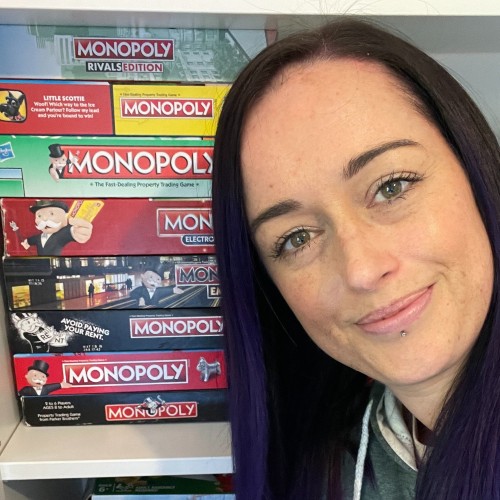Ever tried to pay for something in real life with Monopoly money? It’s unlikely you got away with it if you did, although some people have managed it in the past (more on that later).
There are a lot of differences between Monopoly money and real money – and some similarities too. I thought it’d be fun to compare them side-by-side with this article.
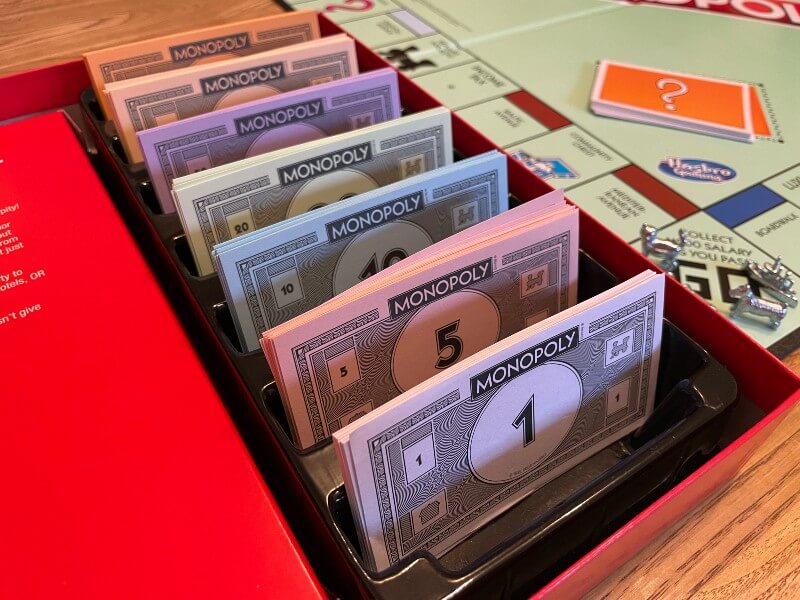
Money Monopoly quick facts:
- Despite rumor, more real money is printed that Monopoly money each year
- There are 7 main denominations in official Monopoly money – M1, M5, M10, M20, M50, M100 and M500
- There’s no official Monopoly money name – it can be any currency you want it to be
- Monopoly money doesn’t have any real-world value
Is more Monopoly money printed than real money?
Officially, more real money is printed than Monopoly money each year, despite some websites claiming the other way round. The Federal Reserve states that between $180 billion and $204 billion will be printed in 2024, while Monopoly’s manufacturers were expected to print around $30 billion in Monopoly money over the same period.
You could make the argument that more ‘new’ Monopoly money enters the world, since much of the real money being printed is to replace old notes that are taken out of circulation.
According to the Federal Reserve, currency in circulation increased by $58.5 billion dollars between June 2022 and June 2023.
Of course, there’s no way of knowing how much Monopoly money is destroyed or trashed each year, so it’s not an easy statistic to compare.
Either way, there is a lot of real money, and a lot of Monopoly money, printed on an annual basis. But if you look at the cold, hard facts, despite fake ‘facts’ online then there is more real money printed each year in the United States than Monopoly money.
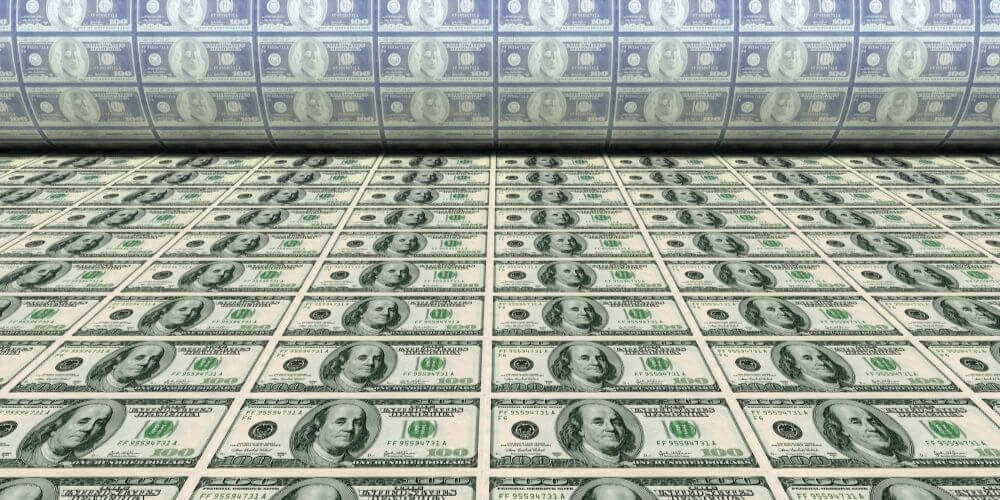
Is Monopoly money the most printed currency?
Monopoly money is not the most printed currency. While many countries don’t reveal the amount printed, there are several countries that do print more money than the manufacturers of Monopoly each year. China is one example – it printed 9.62 trillion yuan in 2021.
[Source]
India is likely to be another. While the country hasn’t published stats on how many rupees were printed each year, there are estimated to be more than 28 trillion rupees in circulation as banknotes. It’s highly probable that more than 30 billion was printed in one year to replace old notes.
When you compare Monopoly money and the British pound, it’s a real close run. Most years, the UK averages between 6 and 15 billion Pounds Sterling printed each year, but it has gone up to 33 billion in some years. Generally, Monopoly money tends to edge it.
Monopoly money and real money denominations
Modern Monopoly has denominated notes of $1, $5, $10, $20, $50, $100 and $500. Some versions have a $1000 bill but this isn’t in Classic Monopoly. In the US, the denominations are similar, with the addition of $2 bills, and there are no banknotes worth over $100.
There used to be, though. Previously printed notes in the United States included the $500 and the $1,000, as well as the $5,000 and $10,000 bill. Despite rumors (and the story of a Simpsons episode), there has never been a $1,000,000 bill issued.
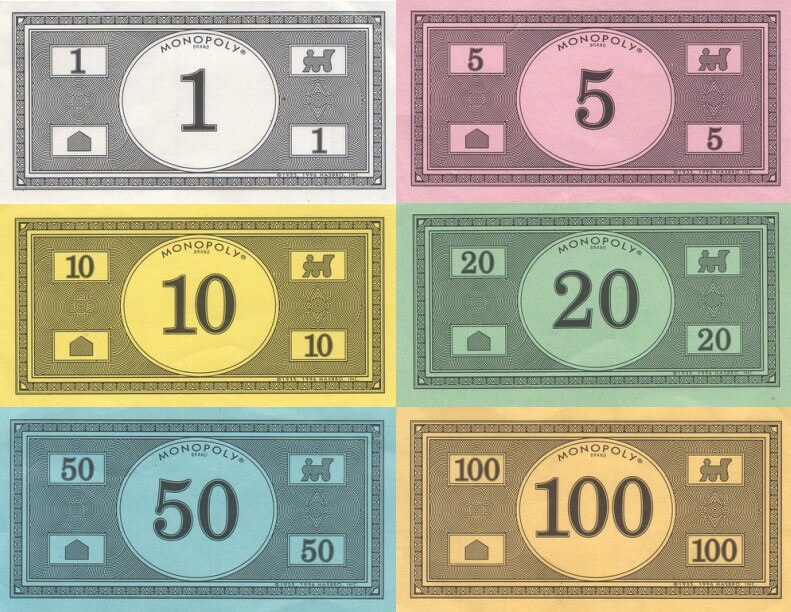
How many colors of Monopoly money are there?
There are seven different colors of Monopoly money, one for each denomination. These are white ($1), pink ($5), blue ($10), green ($20), purple ($50), beige ($100), and orange ($500).
The colors of Monopoly banknotes have changed slightly over the years. $10 bills used to be yellow. $20 bills used to be a darker shade of green. $50 bills were previously purple. And the orange used for $500 is now darker than it used to be.
There was a fun story fed by a Reddit post that the newer US banknotes released in 2003 were made to match the Monopoly money colors at the time. And there does seem to be some grain of truth, although the post definitely enhanced the colors in the banknotes.
Coincidence? Or the Federal Reserve is just trolling.Who prints Monopoly money?
Hasbro, the company that owns Monopoly, prints all Monopoly money. It has various factories around the world. The board game used to be printed in Hasbro’s main Massachusetts factory, but the company has since sold this.
Meanwhile, the US dollar is printed at the Bureau of Engraving and Printing. There are facilities in Washington DC and in the aptly-named Fort Worth, Texas. It’s a very carefully monitored manufacturing process with extremely skilled workers involved in creating banknotes that are exceptionally hard to counterfeit.
It’s fair to say that not as much skill is required for printing Monopoly money, although there is still some serious technology involved in printing such high volumes of the money.
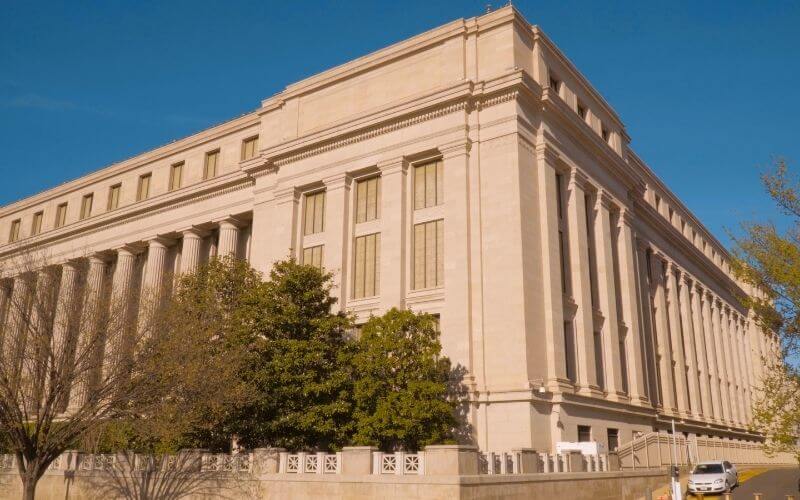
What kind of paper is Monopoly money printed on?
Hasbro is tight-lipped on the exact paper used for Monopoly money. It’s a light stock matt paper, which prevents the notes from sticking. Real money is instead made from a cotton and linen blend, with special fibers woven in to help prevent counterfeiting.
If you want to print your own Monopoly money, then you have a few options. Aim for 20lb standard copy paper and you’ll get something close to the official money. Choose something of a higher stock like 32lb bond paper and you’ll end up with money that feels more premium.
Avoid using glossy paper as this is more likely to stick together, which can be annoying when you’re trying to count out your cash during a game. You could buy a linen-based paper if you want something that feels more like a real banknote too.
What does the M on Monopoly money stand for?
The M on Monopoly money doesn’t officially stand for anything. It’s designed to be universal so that players can call it by their local currency. Most commonly it’s referred to as the Monopoly Dollar.
The original official rules used to use the correct local currency, with US board games referencing the dollar. However, it has been updated with this new M symbol, and there’s not an official Monopoly currency name. Instead, the instructions will just use values, such as saying that a player may owe M100.
Most people still tend to refer to their own local currency, so don’t worry about being a stickler for calling it “Monopoly money”. If you want to call them dollars, or Monopoly dollars, then go for it.
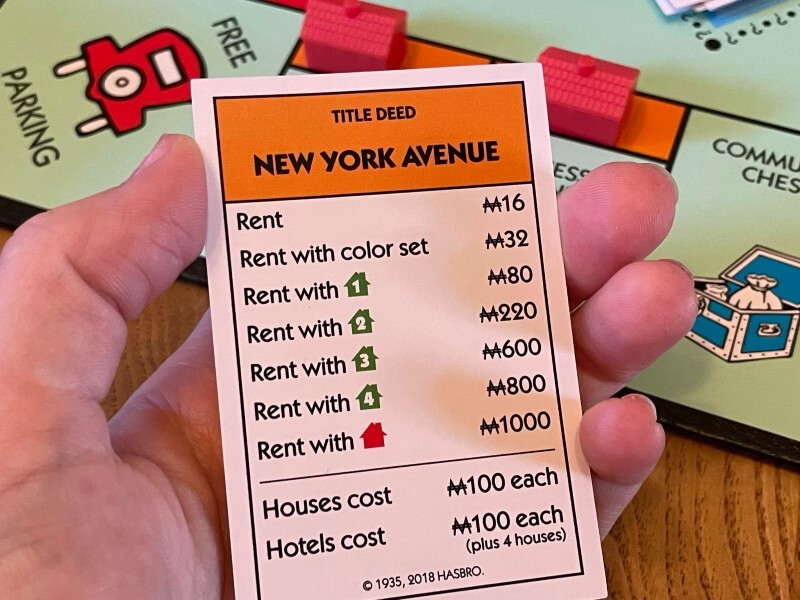
Is Monopoly money worth real money?
Officially, Monopoly cash has no real value. You can’t use Monopoly money as real currency, nor can you officially exchange it for any other currency. It is just ‘play money’ for having fun.
Two conmen did use Monopoly money to pay for €6 million worth of jewelry in Greece. However, once the jeweler opened the suitcase of cash and discovered that most of it was, in fact, Monopoly money, he went straight to the local police station.
Some people have tried to create a ‘value’ for Monopoly money based on the cost of buying a Monopoly game.
Newer Monopoly games include $20,580 in Monopoly money. Say you paid $20 for your board game – that in theory means that $1 USD is the equivalent of $1,029 in Monopoly dollars.
Except that it doesn’t, because that means you’re classifying the board, the property cards, the dice, and even the box as having no value. Despite many people online arguing that you can place a value on Monopoly money, you really can’t.
The only way of really determining anything like a value for the Monopoly currency is to look at how much it costs to buy spare Monopoly money online. But even a quick glance at Monopoly money on eBay shows a huge range in the options available.
Sorry if you were hoping to find out that your collection of Monopoly games was a treasure trove – that’s not the case. Unless you happen to have a super rare and valuable set, of course.
The Bottom Line
When you compare Monopoly money and US dollars, there really are quite a few features they share, including most of the denominations, the huge sums being printed each year, and the color of the notes… sort of.
How much is Monopoly money worth? Not a lot compared to real money. If you try to Google “Monopoly money to USD” you’re not going to get a conversion rate. But at least you know some other cool facts about it now.
One major difference is what you’re allowed to do at home. It’s perfectly legal to print your own Monopoly money, which is a great option if you’ve lost some notes, the dog’s interrupted a game by snacking on your funds, or if you play bigger games and want to expand the bank.
However, it is very, very illegal to print your own US dollars at home, so don’t do that.

